Humboldt Peak, Crestones Traverse
Knocking out the fourth and last of the so called Great Fourtneer Traverses, and my last outing in Colorado this year.
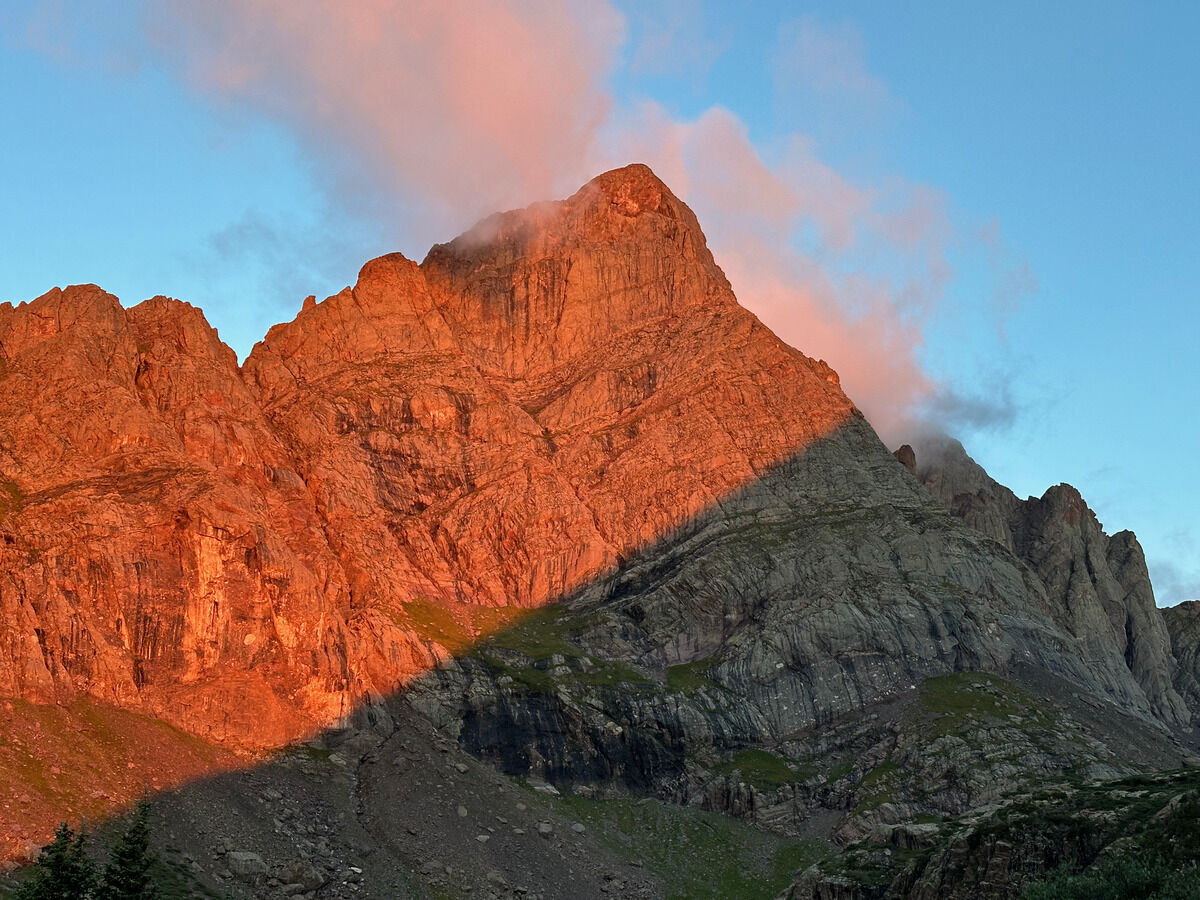 Morning light on Crestone Needle
Morning light on Crestone Needle
 Northern views from Humboldt Peak
Northern views from Humboldt Peak
 And southern views
And southern views
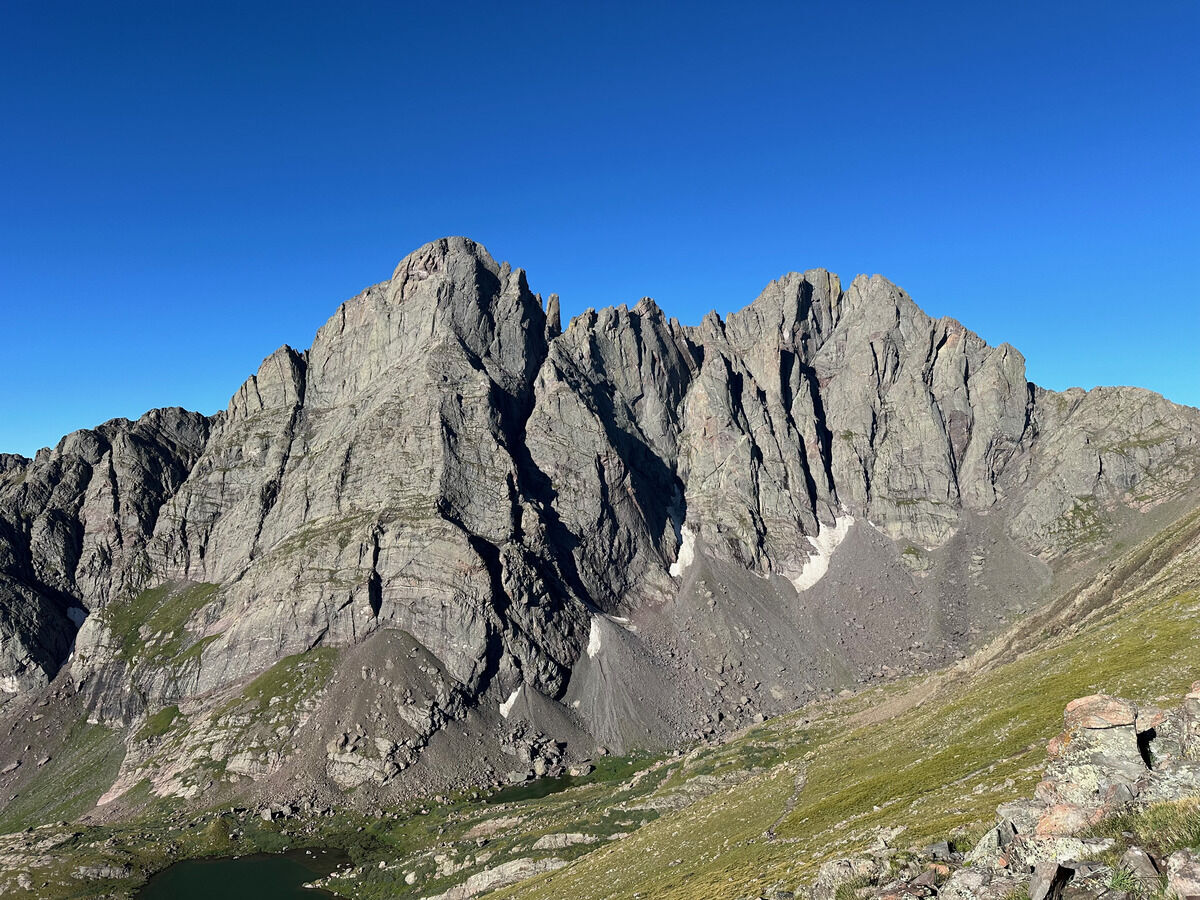 Crestone Needle left and Crestone Peak right. Clear view of the Fifty Classic Climb up Crestone Needle as well (Ellingwood Ledges).
Crestone Needle left and Crestone Peak right. Clear view of the Fifty Classic Climb up Crestone Needle as well (Ellingwood Ledges).
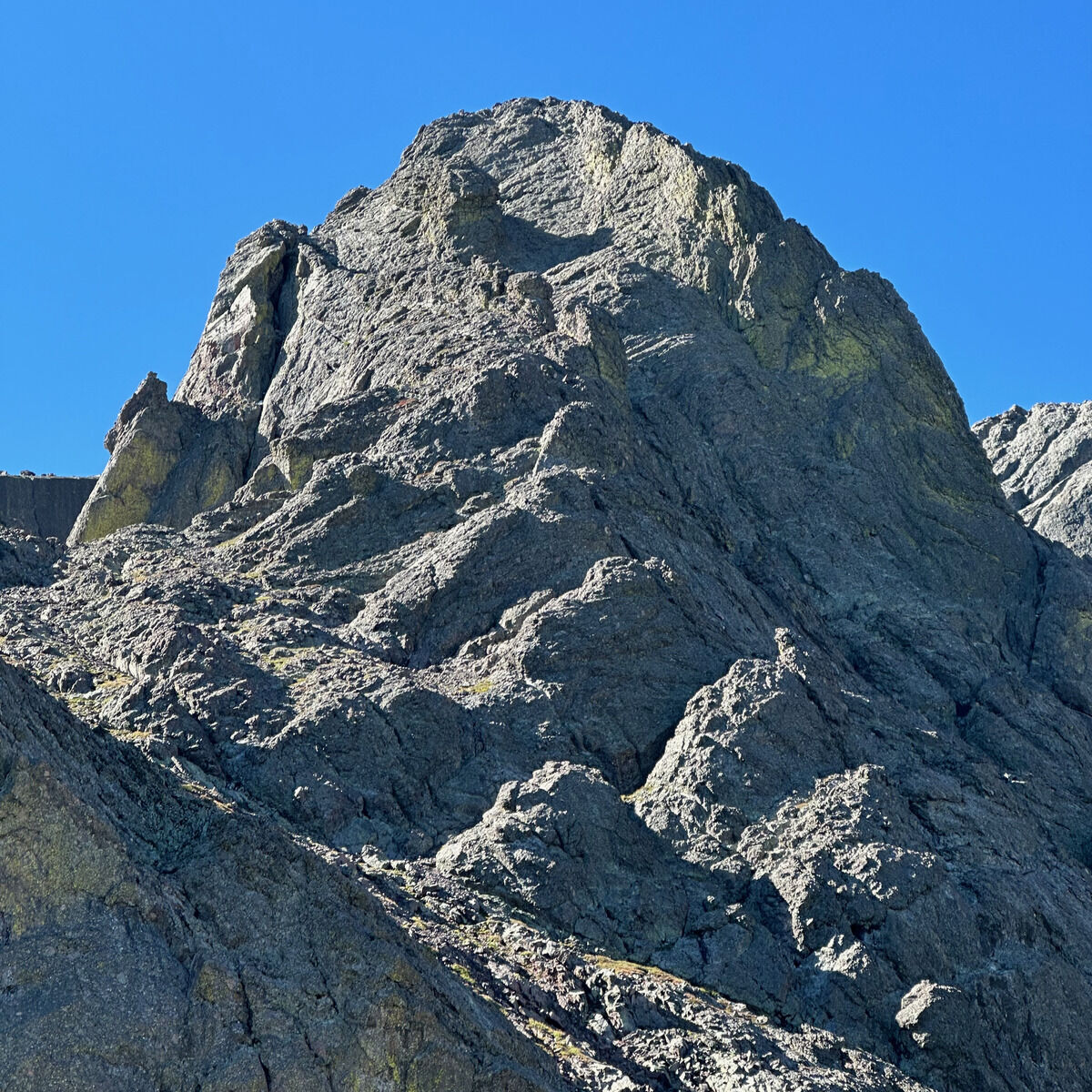 Climbing up the north buttress of the Crestone NE Peak. The scramble was a lot like the North Ridge of Kit Carson with bomber Crestone conglomerate rock.
Climbing up the north buttress of the Crestone NE Peak. The scramble was a lot like the North Ridge of Kit Carson with bomber Crestone conglomerate rock.
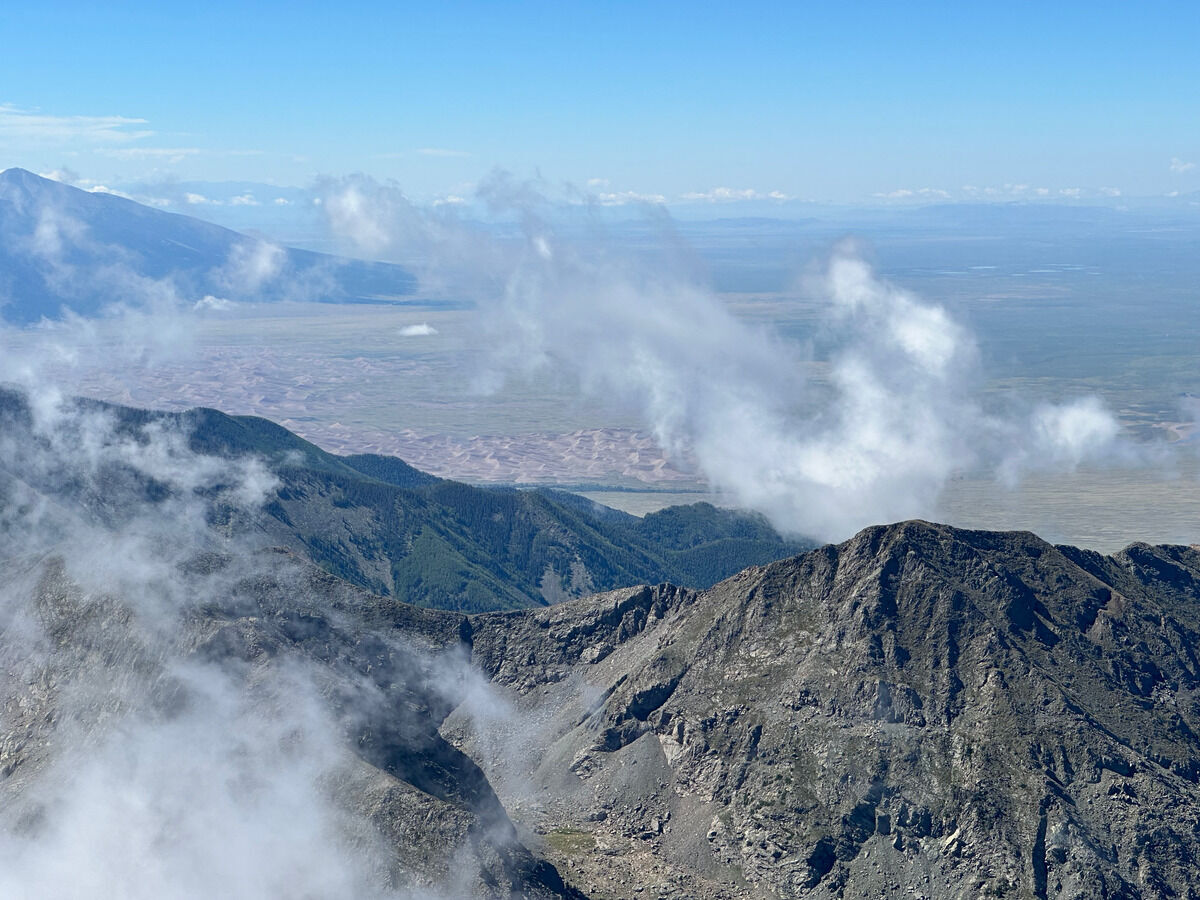 Sand dunes!
Sand dunes!
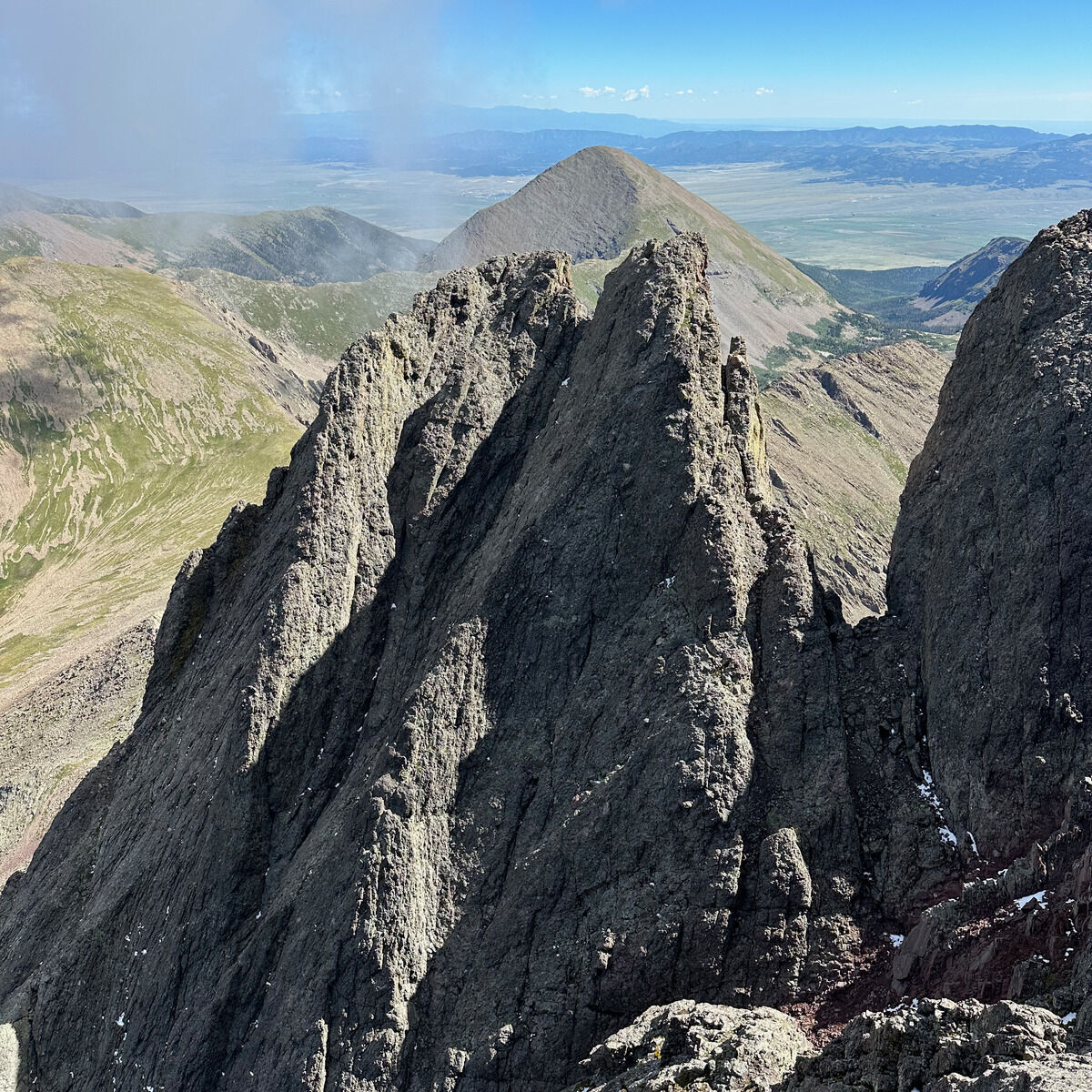 I believe the true summit of Crestone NE Peak is the higher one pictured. The final 5.0 climb from that col felt featureless compared to the scramble just earlier, and the wet lichen made the whole thing feel kind of sketchy, with an audience looking from the true summit of Crestone Peak to watch the whole thing.
I believe the true summit of Crestone NE Peak is the higher one pictured. The final 5.0 climb from that col felt featureless compared to the scramble just earlier, and the wet lichen made the whole thing feel kind of sketchy, with an audience looking from the true summit of Crestone Peak to watch the whole thing.
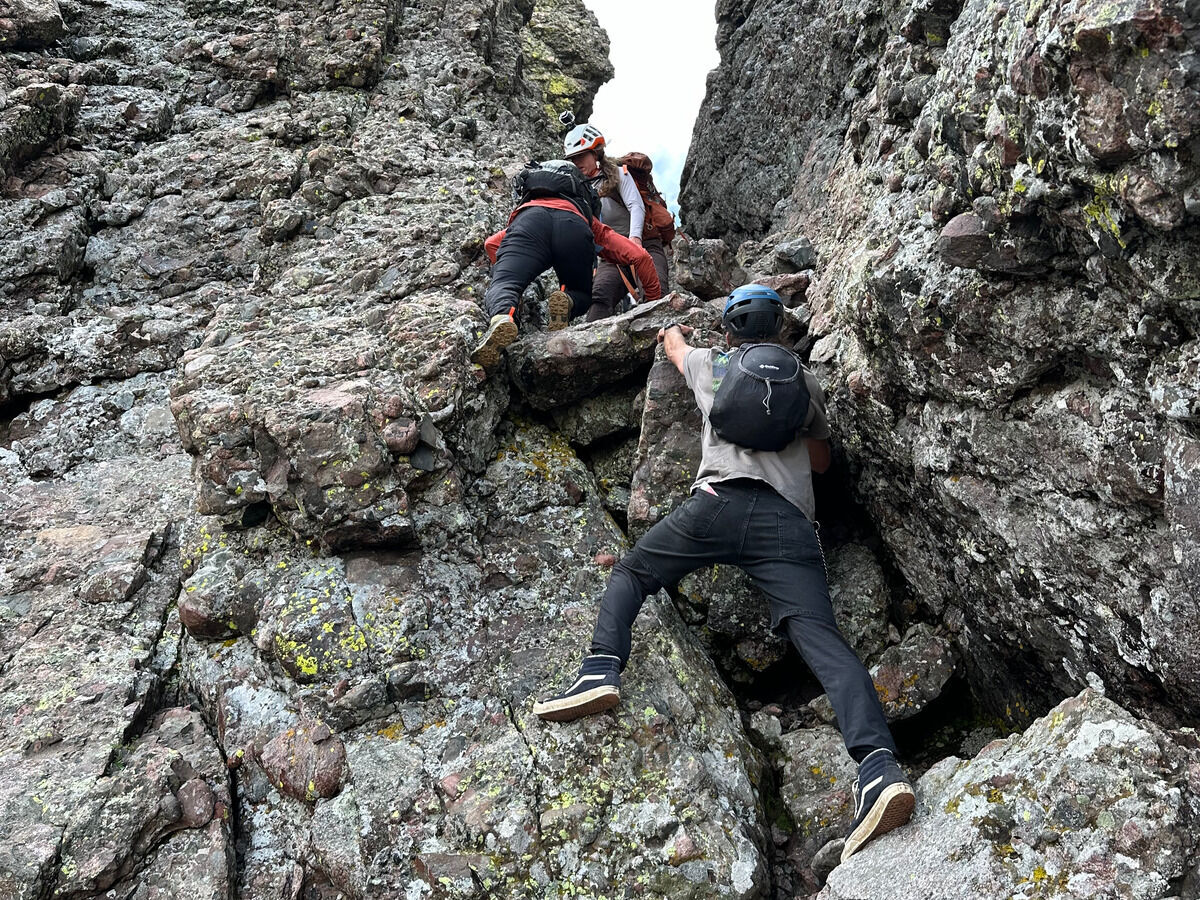 Now back on the well-trodden regular Peak to Needle traverse. Some strangers pulling the supposed 5.2 crux move in street shoes, good ol’ Colorado 14ers!
Now back on the well-trodden regular Peak to Needle traverse. Some strangers pulling the supposed 5.2 crux move in street shoes, good ol’ Colorado 14ers!
Notes
- This was probably ~21 miles and ~8200 feet of vertical gain since I started from the lower 2WD trailhead (a last f you from Colorado). Just shy of 12 hours to car to car.
- The ridge from Humboldt to the large saddle/plateau north of Crestone Peak had slower terrain than expected, but very cool as the landscape was vast and seemed less traveled.
- Highly recommend only doing the north buttress of the Crestone NE Peak when it is absolutely dry. The final slab doesn’t get any sunlight until later in the day, so wait for another full day of sunlight after wet conditions.